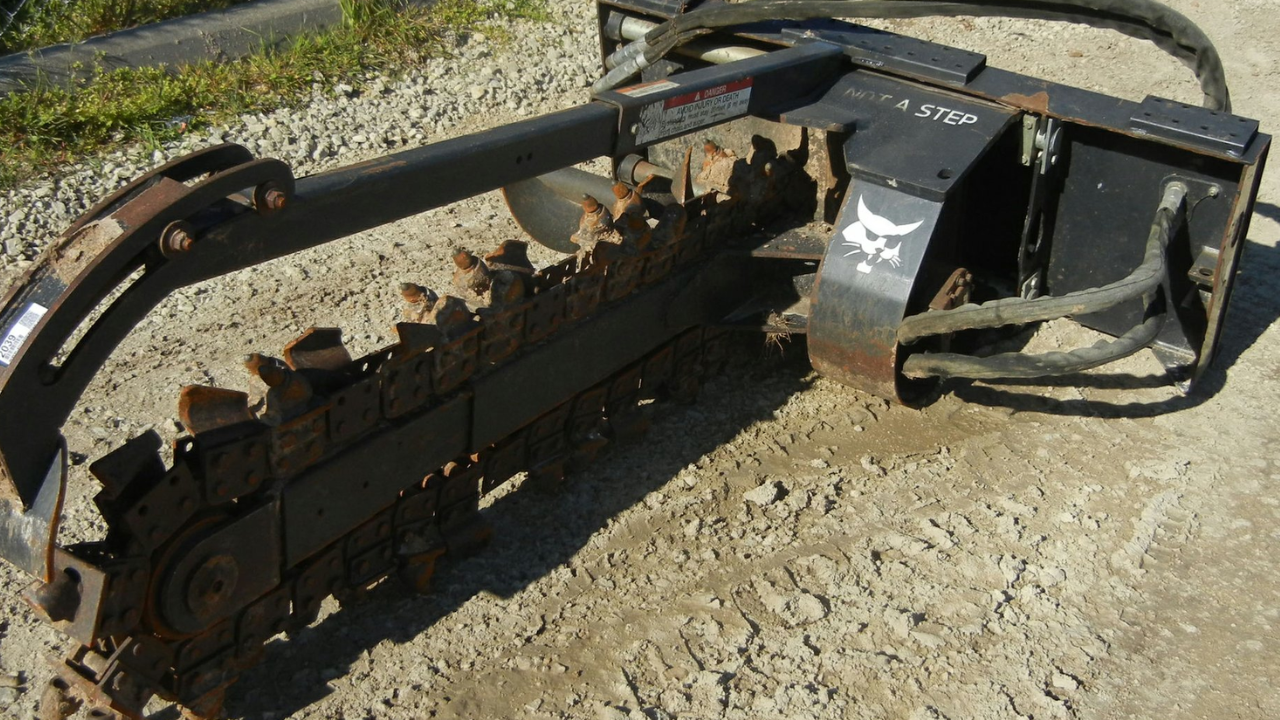Operating trenching machines requires a careful eye to spot possible problems, especially with important parts like trencher teeth. Knowing how to troubleshoot is crucial to keeping these machines working smoothly. Trencher teeth, which do the digging, can wear out or get damaged over time.
This discussion focuses on one key question: How can we find and fix issues with trencher teeth? By understanding the possible problems why do trencher teeth replacement and their solutions, both machine operators and maintenance workers can actively deal with issues, reducing the time the machine is out of service and making trenching work more efficient.
Troubleshooting starts with a good look at the trencher’s teeth, checking for any signs of wear, breakage, or if they are not aligned correctly.
Common Trencher Teeth Issues
Before delving into troubleshooting techniques, it’s essential to understand the common issues that trencher teeth may encounter. Over time, trencher teeth can become dull or worn due to constant contact with abrasive soil and rocks. Dull teeth result in reduced cutting efficiency and may require timely sharpening or replacement.
Uneven wear on the trencher’s teeth can lead to imbalances during excavation, affecting the trench’s quality and depth. Identifying the cause of uneven wear is crucial for maintaining uniform performance. Harsh conditions or encounters with foreign objects can cause trencher teeth to break or chip. Broken or chipped teeth compromise the cutting ability and can lead to further damage if not addressed promptly.
Troubleshooting Techniques
Maintaining the optimal performance of trenching machinery is contingent upon a proactive approach to troubleshooting, specifically when it comes to crucial components like trencher’s teeth. Here, we are going to discuss the essential troubleshooting techniques aimed at identifying and resolving potential issues with trencher teeth:
Regular Inspection
One fundamental troubleshooting technique is implementing a routine inspection schedule. Regularly examining the trencher’s teeth allows operators and maintenance personnel to detect issues before they escalate, minimizing downtime and preventing costly repairs. This comprehensive assessment should include a thorough examination of each tooth.
Check Tooth Sharpness
Maintaining the sharpness of trencher’s teeth is paramount for their effective performance. A simple yet crucial troubleshooting technique involves assessing the sharpness of each tooth. Dull teeth not only compromise the efficiency of the trenching process but also contribute to increased wear and tear.
Evaluate Wear Patterns
Understanding wear patterns on trencher’s teeth provides valuable insights into the machine’s performance and the nature of the soil it encounters. By analyzing the wear patterns, operators can identify potential issues such as uneven wear, which may indicate misalignment or an inappropriate tooth selection. This troubleshooting technique aids in preemptively addressing issues, optimizing the lifespan of the trencher’s teeth.
Inspect for Foreign Objects
Foreign objects lodged in trencher’s teeth can impede their functionality and lead to premature wear. Regularly inspecting for debris, rocks, or other obstructions caught between the teeth is a vital troubleshooting step. Removing any foreign objects promptly prevents damage to the teeth and ensures the trencher operates smoothly.
Check Tooth Holder Alignment
Proper alignment of tooth holders is essential for the effective functioning of trencher’s teeth. Misaligned holders can lead to uneven wear, reduced trenching efficiency, and increased stress on the machine. Periodically checking and adjusting tooth holder alignment is a troubleshooting technique that contributes to the overall performance of the trencher’s teeth.
Monitor Trenching Speed
Trenching speed plays a significant role in the wear and tear of trencher teeth. Excessive speed can accelerate the deterioration of teeth, while too slow a pace may result in ineffective trenching. Monitoring and adjusting the trenching speed based on the soil conditions is a troubleshooting technique that ensures optimal performance.
Final Words
Implementing these troubleshooting techniques for trencher teeth issues is integral to maintaining the efficiency and longevity of trenching machinery. Regular inspections, attention to tooth sharpness, evaluation of wear patterns, inspection for foreign objects, tooth holder alignment checks, and monitoring trenching speed collectively contribute to a proactive maintenance approach, reducing downtime and enhancing the overall effectiveness of trenching operations.
